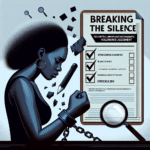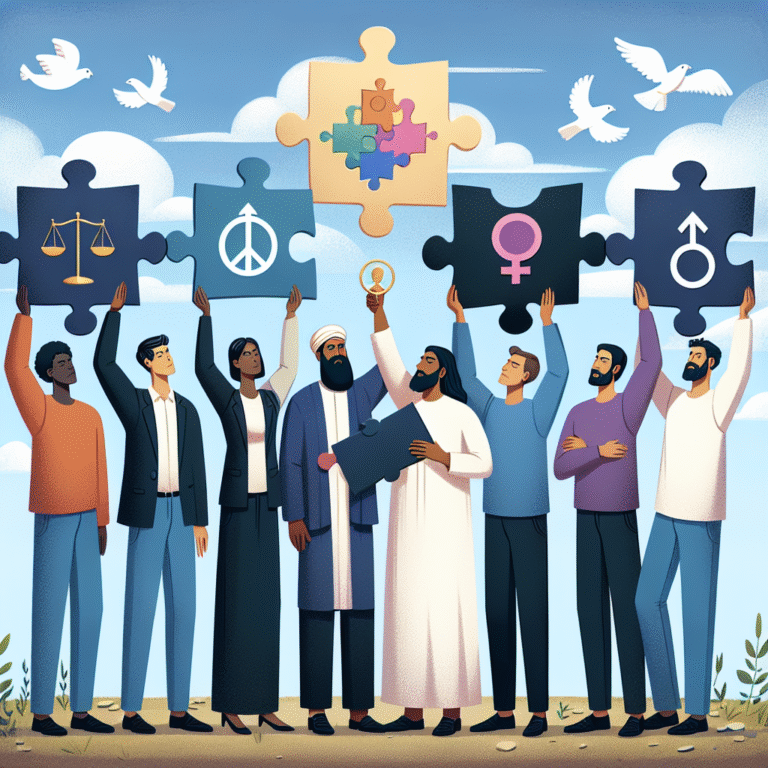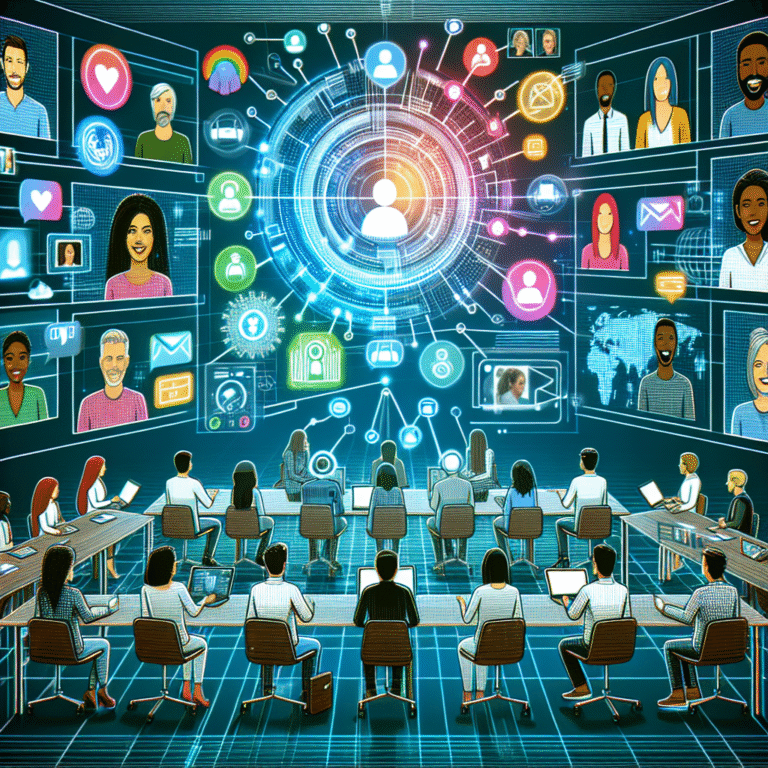Introduction
In an era defined by change, understanding the complexities of gender roles has never been more crucial. The modern patriarchy, while often deemed an antiquated concept, continues to influence societal norms, workplace dynamics, and personal relationships. As we navigate today’s world, the conversation around gender roles becomes essential—not just for women but for men, families, and communities alike. This article delves into The Modern Patriarchy: Navigating Gender Roles in Today’s World, revealing how pervasive stereotypes still shape our experiences and how we can challenge them effectively.
Understanding the Modern Patriarchy
What is the Modern Patriarchy?
The term "patriarchy" refers to a social system where men hold primary power, and it encompasses politics, morals, and social norms. In the context of The Modern Patriarchy: Navigating Gender Roles in Today’s World, it’s crucial to recognize that this system has evolved. Today, while many are advocating for gender equality, elements of patriarchy remain entrenched in our societies, often leading to unequal opportunities and expectations for different genders.
The Evolution of Gender Roles
Historically, gender roles defined men as breadwinners and women as caregivers. However, shifts in the economy, education, and social movements have altered these roles significantly. Despite this evolution, gender stereotypes persist, affecting everything from career choices to household responsibilities. Understanding these shifts is essential in navigating The Modern Patriarchy: Navigating Gender Roles in Today’s World.
Real-World Applications: Case Studies
Case Study 1: Women in Leadership
A powerful example of navigating the modern patriarchy can be seen in the corporate world. A notable case is that of Mary Barra, CEO of General Motors. Under her leadership, the company has focused on innovation and diversity. Barra’s ascent not only challenges traditional norms of women in leadership roles but also serves as a reminder that embracing diverse perspectives can lead to significant business advancements.
Analysis
Barra’s story underscores the importance of having female representation in leadership roles. It is a testament to breaking down barriers that have historically prevented women from achieving positions of power, demonstrating that navigating The Modern Patriarchy: Navigating Gender Roles in Today’s World can yield transformative results for organizations and society at large.
Case Study 2: Stay-at-Home Dads
Another revealing example is the increasing visibility of stay-at-home dads. Take the family of Chris and Lisa, where Chris decided to leave his corporate job to raise their children while Lisa pursued her career. This dynamic flips traditional gender roles on their head, showcasing how modern families are redefining responsibilities based on personal strengths rather than societal expectations.
Analysis
Chris’s experience highlights the changing landscape of parenting and familial roles. His willingness to embrace a non-traditional role challenges outdated notions of masculinity and reflects a broader trend in The Modern Patriarchy: Navigating Gender Roles in Today’s World. This shift encourages discussions around the diverse forms masculinity can take and promotes equality at home.
Navigating Societal Norms
Challenging Stereotypes
One of the most effective ways to navigate The Modern Patriarchy: Navigating Gender Roles in Today’s World is by actively challenging stereotypes. Education plays a vital role here. By teaching young people about gender equality in schools, we can dismantle outdated notions that still hold sway.
Practical Strategies
- Educate: Integrate gender studies into curricula and encourage critical thinking about gender stereotypes.
- Engage: Promote discussions around gender roles in community spaces, workplaces, and families.
The Role of Media
Media representations significantly shape public perception of gender roles. For instance, films and television shows often reinforce stereotypes, but platforms embracing diverse narratives can challenge the status quo. A notable example is the television series "Crazy Ex-Girlfriend," which tackles gender norms head-on, showcasing women’s empowerment while critiquing traditional male roles.
Gender Roles in the Workplace
Gender Bias in Hiring
Gender biases in hiring practices remain a significant barrier in The Modern Patriarchy: Navigating Gender Roles in Today’s World. Research shows that resumes with traditionally male names tend to receive more favorable reviews than those with female names, even when qualifications are equivalent.
Solutions
- Blind Recruitment: Implementing blind recruitment processes can help mitigate biases.
- Diversity Training: Regular training can raise awareness and encourage fair hiring practices.
Workplace Flexibility
Offering flexible work options can help balance traditional gender roles within professional environments. Companies that support remote work or flexible hours empower both men and women to manage their responsibilities more effectively.
The Intersectionality of Gender Roles
Understanding Intersectionality
Gender roles do not exist in a vacuum. Factors such as race, socioeconomic status, and sexual orientation intertwine and compound the effects of patriarchy. The experiences of a Black woman in the workforce, for example, can be vastly different from those of a white man or a Latina woman.
Real-World Example
Consider Ava DuVernay, a groundbreaking director who often highlights intersectional issues in her films. She has used her platform to amplify diverse voices and address systemic barriers faced by women of color in the film industry.
Actionable Insights: Navigating the Modern Patriarchy
- Promote Gender Equality: Encourage gender-neutral policies in workplaces and schools.
- Advocate for Diverse Representation: Support businesses and initiatives that prioritize diversity in hiring and leadership.
- Foster Open Discussions: Create safe spaces for conversations on gender roles in your community.
Conclusion
In the journey of The Modern Patriarchy: Navigating Gender Roles in Today’s World, the path to gender equality is increasingly illuminated by awareness, advocacy, and action. By recognizing the residual impacts of patriarchal systems and striving for progress, we can cultivate a more equal society. Each of us has a role to play; whether through challenging biases, supporting diverse voices, or promoting equality, the power of change lies in our hands.
FAQs
1. What are the most common gender stereotypes today?
Stereotypes persist, such as women being nurturers and men being the primary providers. This creates imbalanced expectations across personal and professional lives.
2. How can I challenge gender roles in my workplace?
Encourage open dialogue, promote diversity in hiring practices, and advocate for policies that support work-life balance.
3. Are there successful male feminists?
Yes! Many men actively support gender equality, like Emma Watson’s HeForShe campaign, which invites men to take an active role in advocating for women’s rights.
4. How do cultural differences impact gender roles?
Cultural norms strongly influence gender roles, and the understanding of patriarchy may vary significantly across different countries and societies.
5. What steps can I take to educate others about gender roles?
Start by sharing articles, hosting discussions, and organizing events focused on gender equality in your community or online platforms.
Navigating The Modern Patriarchy: Navigating Gender Roles in Today’s World is a collective journey. Each small step towards awareness and action can contribute to a more inclusive future. Embrace your role in this transformative process!

















